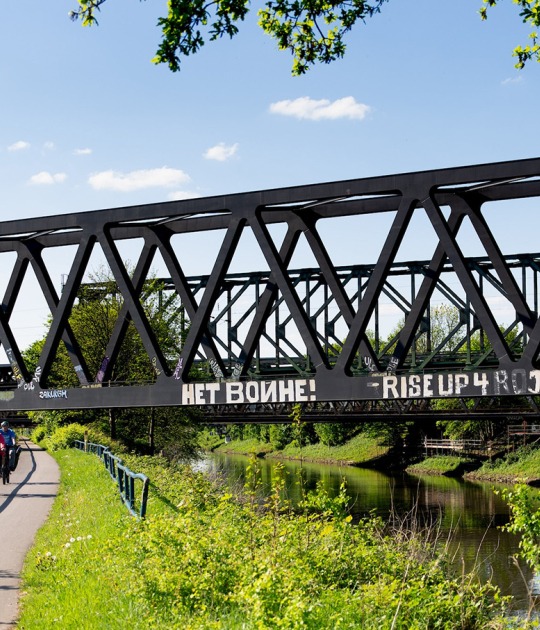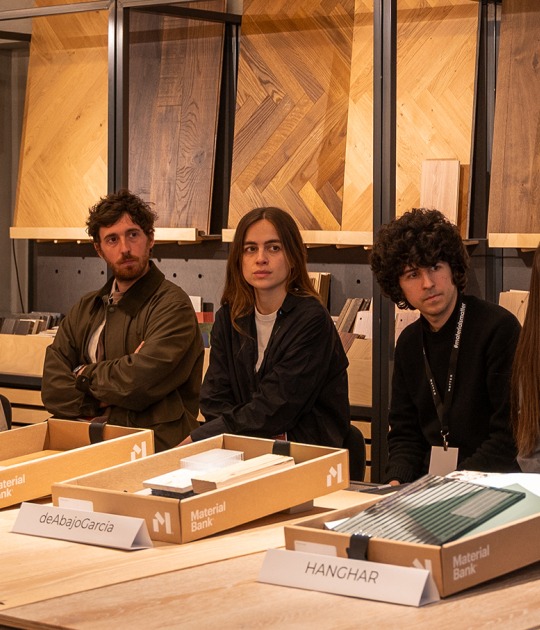On the occasion of Andrés Jaque’s invitation to give a lecture as part of the “Talk, Talk, Talk” series at the 7th Lisbon Architecture Triennale, METALOCUS interviewed the Spanish architect and current dean of Columbia University.
METALOCUS – Agustina Berta: The theme of this day is “Fluxes — Changes and Transformations.” In that sense, what transformations do you consider the most decisive? And what role is assigned to architecture in the face of these transformations?
Andrés Jaque: First, our idea of architecture is often object-based, isolating buildings and turning them into self-contained elements defined by their own volume. We could say the same about bodies and organisms that we consider living: we understand them as something contrary to the inert and also closed in on themselves, self-confined within their own volume.
From an ecological perspective, the inert and the living are not easy to distinguish; there are infiltrations, dependencies, and processes that connect them. For example, stones are living elements. In the Stonelife project, we are reclaiming the role of stones as ecosystems—just as dynamic, participatory, and collective as the Amazon or a forest. The thing is, we humans don’t have the capacity to observe this. We haven’t had it in the past, but now we do have the possibility of observing it.

RUN RUN RUN Restaurant by Andrés Jaque. Photograph by José Hevia.
The way we have related to stones—through extraction, cutting, shaping, and excavation—are all extractive and exploitative mechanisms. But what would architecture be like if we promoted a relationship with the ‘other-than-human,’ with the ‘more-than-human,’ based on strengthening the bonds that unite us?
I believe this is what is relevant at this moment. This way of understanding things makes categories or notions such as that of the city obsolete. We are no longer so interested in the city as a stain on the landscape, since it is incapable of explaining or making visible relationships that are much more complex—those that occur across scales, that are distributed, and that connect different realities: for example, relationships between Hudson Yards and places in South Africa where the titanium needed for the titanium dioxide coating that makes the buildings shine is extracted.
All these dependencies have a more complex spatiality. I think that now the most important thing is that cultural, political, ecological, and climatic paradigms require another kind of spatiality—and that spatiality is transscalar.

Rambla Climate-House by Andrés Jaque / Office for Political Innovation + Miguel Mesa del Castillo. Photograph by José Hevia.
In the session titled “Spectres — Empire and Extractivism,” the topic of building from the invisible was discussed. Regarding this idea, what processes do you consider to be silently reshaping contemporary urban life?
Architecture has always been dependent and has functioned as a technology of perception, communication, and dissemination. Architecture has been simultaneously a "medium" and a "media." There is no reality that, to be felt, mobilized, made visible, mapped, and understood, does not require a specific architecture that fulfills those functions. In other words, the reality we see and feel now is the result of an architecture that allows our bodies, through our sensory and cognitive limitations, to perceive it.
The thing is, the processes that are important now are those that largely escape the human sensory spectrum. For example, many of the realities we work with at OFFPOLINN occur on either very small or very large scales. They occur at the scale of filaments and roots, but also on large scales, such as rock formations.
Our work devotes significant attention to the development of technologies of representation and visualization, which are inseparable from the projects we undertake. To carry out projects like the Reggio School, we have had to build alliances with scientists, politicians, and activists—many people who enable an expansion of human cognitive and perceptual capacities.
For the Rambla Climate-House, we had to partner with soil scientists, land and soil activists from the Murcia region, hydrology experts, artists, and others. All of this makes the architectural project one that acts upon an "environment" and a "medium," but at the same time constructs the "environment" and the "medium" through which humans ally themselves with other agents.

"Stonelife" at the Bienal de Venecia by Andrés Jaque / OFFPOLINN. Photograph by José Hevia.
Considering architecture as a form of political action, do you think it’s possible to maintain a critical, social, and experimental practice within a system defined by profitability and inequality? Is it only possible to apply it in spaces of reflection, such as the Triennale?
There can be no social and ecological impact without building an authoritative voice. Architecture at this moment can only exist as an act of dissent—dissent against hegemonic powers—and for that, it requires a balance between research, design, and activism. If we map architectural practices at this moment, they all share this combination.
Since 2003, OFFPOLINN has implemented this formula, and that’s why we’ve been able to carry out projects that, from more conventional positions, would have been impossible. It’s also important to understand that our field—architecture—is not one of consensus; there are contested practices. We don’t all agree with one another. This is part of the urban and political dimension of our practice.
Ultimately, I believe that in the 1980s and 1990s, architecture was conceived as a practice that provided space. The idea associated with architecture as the provision of space inherently implied that this space was socially and politically neutral. That is, the social aspect was something that was invoked but occurred before and after architecture—not simultaneously with its formation.

Reggio School by Andrés Jaque. Photograph by José Hevia.
In contrast to this idea, anchored in the 1990s, we have advanced a compositional understanding of architecture: architecture is not the provision of spaces because space does not exist. There is no material, political, or ecological difference between the air we breathe and the walls. Walls circulate; we breathe them. Particles of concrete fly through the air; we inhale them. There is a circularity in everything we do that makes the air, especially, the same as concrete pavements, walls, etc.
This circularity of matter means that the notion of space does not exist; it is an obsolete fantasy. It does not, for example, address issues such as those raised by the climate crisis: the presence of particles or microorganisms in the air is fundamental to understanding what kind of climatic behavior a place has.
When I say that architecture is compositional, I mean the alliances between humans, other life forms, minerals, water... All these concatenations of alliances are built through cultural principles and ideological and political paradigms. This way of assembling different things is politics itself—and it is architecture. Architecture is articulation and assembly; it is not the box that contains them. There is no box that can contain the social and the ecological. The social and the ecological are architecture—they are the process through which it is built and intervened upon. This gives importance to notions such as articulation and composition.
Architecture is articulation and composition, not space. This makes our practice intrinsically political. When we talk about how alliances and coalitions between different agents are forged, we are necessarily talking about politics.

Rambla Climate-House by Andrés Jaque / Office for Political Innovation + Miguel Mesa del Castillo. Photograph by José Hevia.
Do you think cultural and academic institutions are prepared to share these changes that the profession is undergoing?
For the past four years, I have been the dean of the Graduate School of Architecture, Planning and Preservation (GSAPP) at Columbia University in New York—a space recognized as one of the most important, where architectural practice converges with theory and criticism. This innovative space is where all these transformations are taking place, anticipating future practices: transscalar thinking, radical ecological thinking, and the understanding of architectural design as a critical practice intrinsically dependent on theory.
Architects, urban planners, curators, researchers, scientists, activists, and artists work interdisciplinarily on issues that no one can address in isolation. The implemented model, called ‘clinics,’ has shaped the pedagogy of Columbia GSAPP and manages to address complex issues, such as limiting exclusion in gentrification processes in densely populated cities, or identifying mechanisms that can generate equity in transitions like that of Tuvalu—an island that will soon disappear due to rising sea levels.
These big questions, which are the questions architects must ask themselves today, require a different kind of pedagogy.
Being in constant contact with students, what excites and inspires you most about future generations?
At Columbia, we have a diverse representation of the world’s complexity. What excites me about the new generations is that they don’t see architecture as a matter of stylistic design. They aren’t seduced by the appearance of architecture as portrayed in an Instagram post. They have the curiosity and commitment to understand that architecture is deeply connected to social, migratory, and ecological processes—processes far more complex than a stylistic discussion. Therefore, they want to mobilize architecture’s capacity to address the major issues of our time.

































